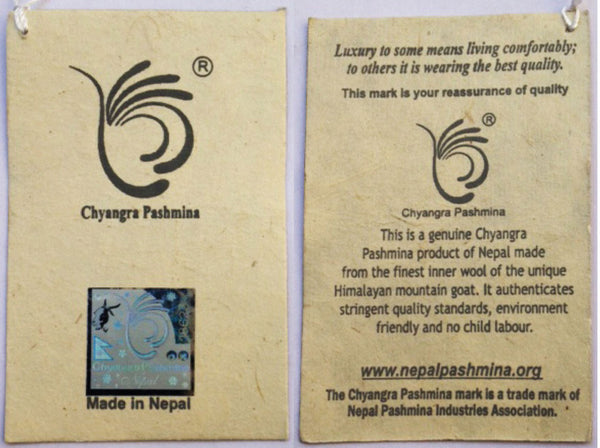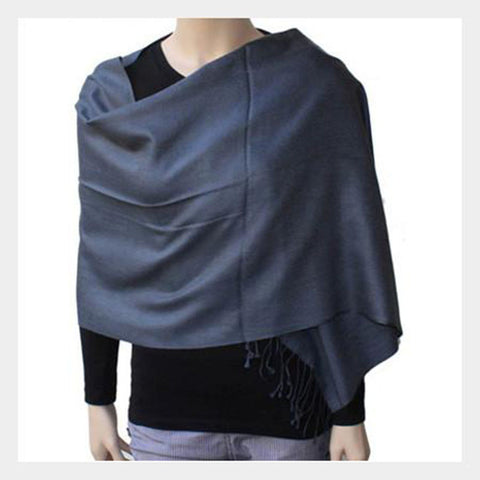Real Pashmina Test
Real Pashmina Test: How to Know if It’s Truly Pashmina
Real Pashmina Test: For years, there has been a lot of buzz around “cashmere” and “pashmina” for a reason: many have become unknowing victims of fraudulent vendors, especially online.Why did this happen in the first place?
It goes down to the choice of words. Many try to differentiate between pashmina and cashmere when the truth is both words refer to the same thing: a luxurious, soft, fine fabric made from certain goats found in the Himalayan regions. Although there are also other types of goats that can produce beautiful, soft hairs, they aren’t as fine as those of cashmere. Speaking of cashmere, the word actually comes from Kashmir, a region in Pakistan where most of these goats thrive and where some of the first types of wool had been sold many years ago. When it was brought back to the United States, it became cashmere. However, for the locals, the wools are called pashm. When they have been processed—that is, they have been cleaned and spun—they are already pashmina. Many vendors, though, pass other types of materials including acrylic or rayon as pashmina simply because others have become more aware of what cashmere is. This is where the problem starts because they may be attracted to pay a very high price for what could have been a very ordinary material or they end up disappointed because what they’re looking for is the real thing.How do you know?
There is only one known way of real pashmina test to determine whether what you have is a real pashmina or not, and it involves burning. To perfom the real pashmina test , get a small portion or even a fringe of the supposed pashmina fabric, light it, and wait for it to burn. Then you smell and touch it. Since pashmina or cashmere is made from real natural hair, it should also smell like burnt hair, not like a burning plastic. Moreover, despite being burned, the material should still feel matte or very similar to the way it was. Otherwise, if it feels viscose, then you know that it’s fake. This real pashmina test tactic is now being used by many shawl vendors in Nepal and India to convince buyers, and you can do the same as well. Just buy a fabric with tassels or fringes. Know, though, there’s a risk involved, and that is you may only end up damaging the entire look of the fabric. To avoid it, you can use other forms of “tests”:Know the definition of cashmere.
According to the Cashmere and Camel Hair Institute, a fabric is considered cashmere if it comes from the undercoat of a Capra hircus laniger or a Cashmere goat. Moreover, its fibers should measure no more than 19 microns in diameter and that portions that are 30 microns and above should not be over 3% of the entire fabric. Pashminas are 15 microns or less.
They shouldn’t be dirt cheap.
Some vendors are lucky enough to acquire real pashminas for a more affordable price, so they’re also able to sell them at a cheaper cost. Pashminas, needless to say, don’t retail for $20 or even cheaper than that. After all, producing it is painstaking, and manufacturers can harvest hairs only once a year.You should be able to tell by touch and sight.
Real pashminas are very soft and warm to touch, owing to the thickness of the hair. But they are also matte, which means they don’t have any sheen in them unless the fabric is blended with silk, in which case the label or some sort of certification should mention that. To be considered as high-quality pashmina, 70% of it should be made cashmere. So in summary:- By burning the fibre of your pashmina, you'll know the quality of you your pashmina. However, we don't recommend you to do this unless you are prepared to do this at your own risk.
- It shouldn't be dirt cheap. Remember, the pashmina goats are one of the rarest species that only live on the high altitude areas. You can only shade their fur once in a year and there is only limited amount that you can shade unlike the artificial fibres which can be manufactured at any amount.
- You should be able to feel the softness and warmth. They should be light, soft and warm. Some pashmina that has silk blend will be little bit shiny.
- Always check the label. It should clearly state the fibre content. It should either say 100% cashmere or 70% cashmere,30% silk.
Nepalese government has introduced its unique hallmark also known as "Chyangra pashmina" which is only produced from the high altitude goats from the Himalayas. The local name of these goats is called "Chyangra". If you are purchasing your shawl that has the origin from Nepal, then always check if you will get the Chyangra pashmina label with your purchase.

If you wish to check our hand made pashmina scarves and shawls, you can click on these links:
Pashmina Shawls Blended With Silk
Feel free to contact us if you have any further queries regarding the quality, colour and sizes by filling in your details at our Contact Us page. Here are some of the counterfeit pashmina realted articles you may want to read: Italy: 'Cashmere' clothes found to contain rat fur



